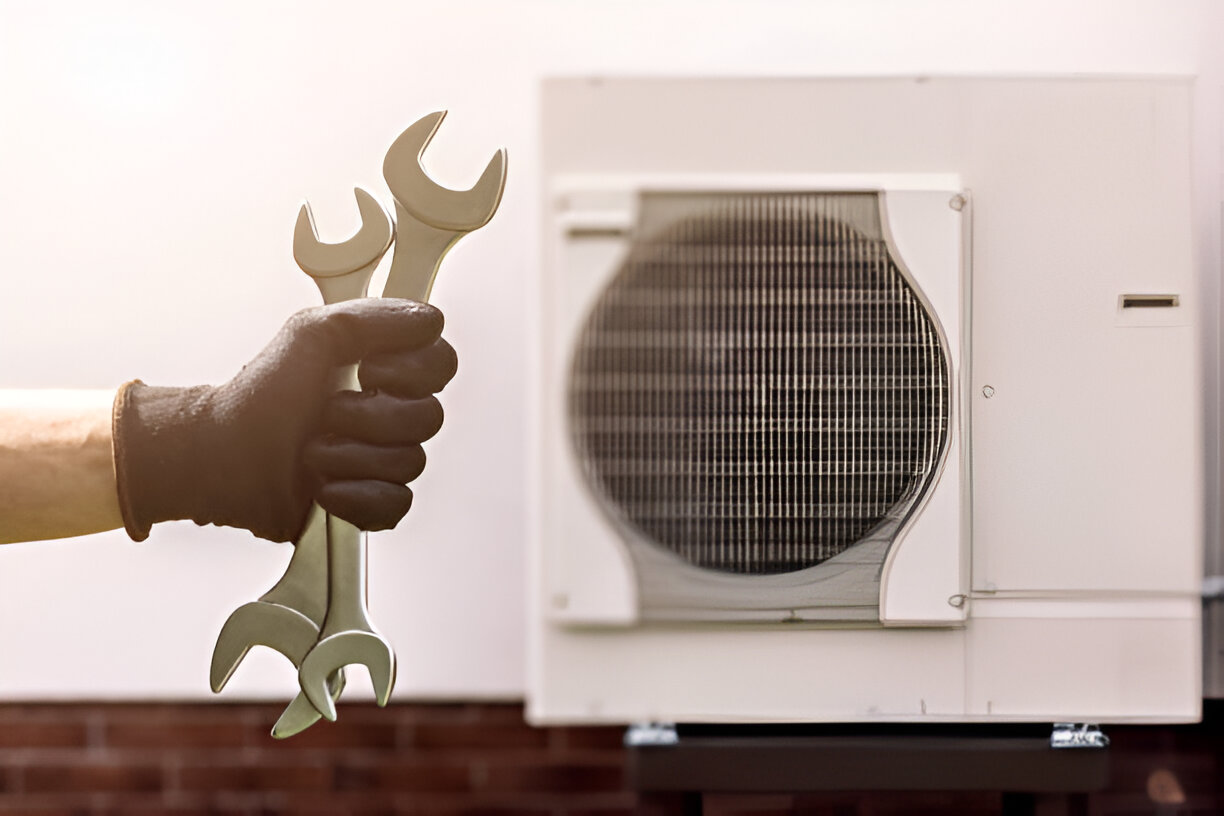Heat Pump Repair in Fountain Hills, AZ
Heat pumps are the backbone of year-round comfort in Fountain Hills, AZ, where hot, dry summers and mild winters put unique demands on HVAC systems. When a heat pump stops heating or cooling properly, it can quickly affect comfort and energy costs.

Common heat pump problems in Fountain Hills homes
Heat pumps in this region face heavy seasonal use and environmental stressors such as dust, high summer temperatures, and monsoon storms. Typical issues include:
- Loss of heating or cooling performance
- Refrigerant leaks and low refrigerant charge
- Compressor failures or reduced compressor efficiency
- Reversing valve malfunctions that prevent switching between heat and cool modes
- Short cycling due to controls, thermostats, or capacitors
- Reduced airflow from clogged filters, dirty coils, or failing blower motors
- Electrical faults: failed contactors, capacitors, or control board problems
- Condensate drain clogs and water-related damage during monsoon season
Identifying the underlying cause quickly prevents added damage and higher energy bills.
Diagnostic and troubleshooting process
A methodical diagnostic process separates a temporary symptom from a systemic problem. Professional technicians typically follow these steps:
- Initial inspection and history
- Review recent performance, noise, and thermostat behavior
- Inspect outdoor unit for debris, physical damage, or animal nests
- Electrical and control checks
- Test breakers, fuses, contactors, capacitors, relays, and control boards
- Verify thermostat calibration and control signals
- Airflow and indoor system checks
- Inspect filters, return grills, ductwork, blower motor, and indoor coil condition
- Measure airflow to detect blockages or fan issues
- Refrigerant and pressure testing
- Check static and running pressures with gauges
- Use electronic leak detectors or dye to locate refrigerant leaks
- Compressor and reversing valve evaluation
- Assess compressor current draw, oil condition, and operational sound
- Test reversing valve operation and solenoids for mode switching
- Performance validation
- Measure temperature split, subcooling, and superheat
- Run the system through heat and cool cycles to confirm repair needs
This step-by-step approach ensures repairs target the root cause, not just symptoms.
Parts replacement and system restoration
Common repair and restoration actions include:
- Refrigerant leak repair and recharging to manufacturer specifications
- Compressor replacement or rebuild when motor or compression elements fail
- Replacing the reversing valve or its solenoid when mode change fails
- Swapping failing capacitors, contactors, relays, and thermostats
- Repairing or replacing indoor coils and condenser coils damaged by corrosion or debris
- Repairing or replacing the blower motor or fan assembly to restore proper airflow
- Brazing line-set repairs, evacuating the refrigerant circuit, and performing an authorized vacuum and charge procedure
- Updating controls or reversing valve actuators on older systems for better reliability
After parts replacement, technicians perform a full system start-up and calibration, confirm pressures and electrical loads, and provide a performance report to verify the system operates within manufacturer tolerances.
Expected timelines and service options
Timing depends on the scope of repair and parts availability:
- Simple fixes (controls, capacitors, contactors, thermostat adjustments): typically completed in a single visit, often within a few hours.
- Refrigerant leak detection and repair with recharge: can take several hours, depending on leak location and whether parts are needed.
- Major component replacement (compressor or reversing valve): often requires several hours; in some cases parts lead time can extend the job to the next business day.
- Coil or system-level repairs: may require scheduling and additional labor and can span one to two days.
Emergency and same-day service options are commonly available for Fountain Hills residents, especially during peak seasons when heat pump failures impact home safety and comfort.
Compatibility with major manufacturers
Modern diagnostic equipment and trained technicians are familiar with major manufacturers, including Day & Night systems. Whether your heat pump is a current model or an older unit, technicians will reference manufacturer specifications for refrigerant type, pressure ranges, electrical parameters, and approved replacement parts to maintain warranty compliance and system longevity.
Warranty and financing information
Repairs may be covered under existing manufacturer warranties for parts, and many service providers offer limited labor warranties on repairs. Documentation of parts and procedures is important to maintain any applicable coverage. For homeowners considering a replacement instead of repair, third-party financing options through recognized lenders are commonly available to help manage the investment over time, sometimes including promotional terms on eligible equipment.
Preventive maintenance and tips specific to Fountain Hills
Routine maintenance reduces breakdown risk and keeps operating costs low, especially given the local climate:
- Schedule seasonal tune-ups: twice yearly inspections before summer and winter seasons help catch issues early.
- Change filters regularly: in dusty conditions change or clean filters more often to protect coils and blowers.
- Keep the outdoor unit clear: remove pumice, dust, debris, and vegetation, and maintain at least 2 feet of clearance for airflow.
- Protect during monsoon season: ensure drain pans and condensate lines are free of debris to prevent water backups.
- Shade and location: units exposed to direct sun all day will work harder; where possible provide shading without obstructing airflow.
- Monitor energy use: a sudden spike in bills often signals reduced efficiency or a developing fault.
- Address odd noises or odors early: unusual sounds, burning smells, or ice formation on coils are signs to have the system inspected promptly.
Regular maintenance not only improves reliability but also extends the life of your heat pump in Fountain Hills conditions.
Final note
A professional, methodical approach to heat pump repair ensures repairs are safe, durable, and aligned with manufacturer guidance. In Fountain Hills, proactive maintenance and timely repairs prevent discomfort and reduce long-term costs by preserving efficiency in a climate that puts steady demand on heating and cooling systems.
Customer Testimonials
Hear directly from our customers about the quality, honesty, and care we bring to every job.










